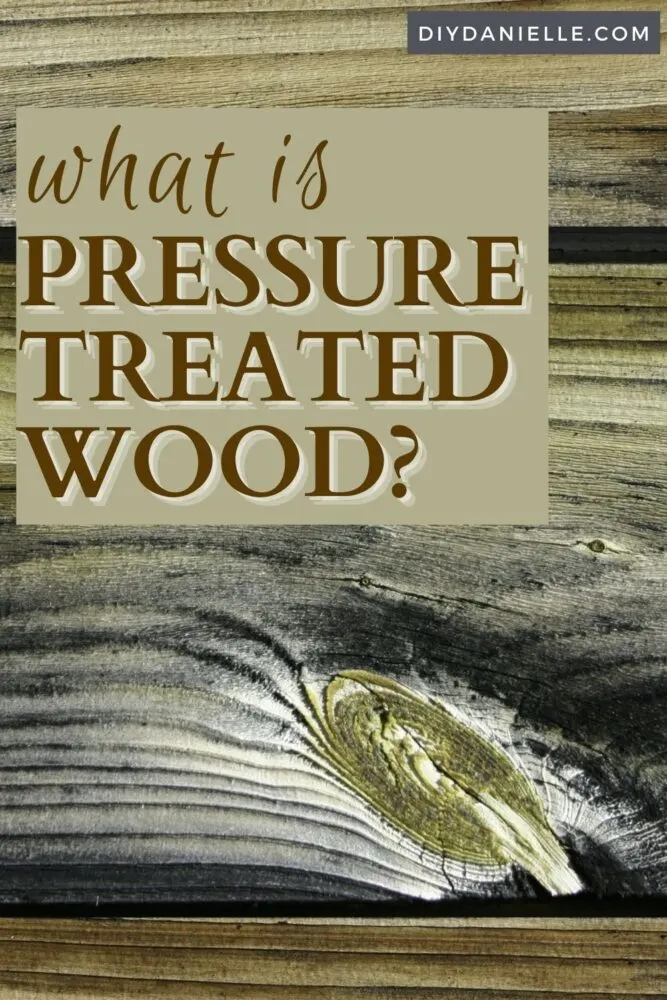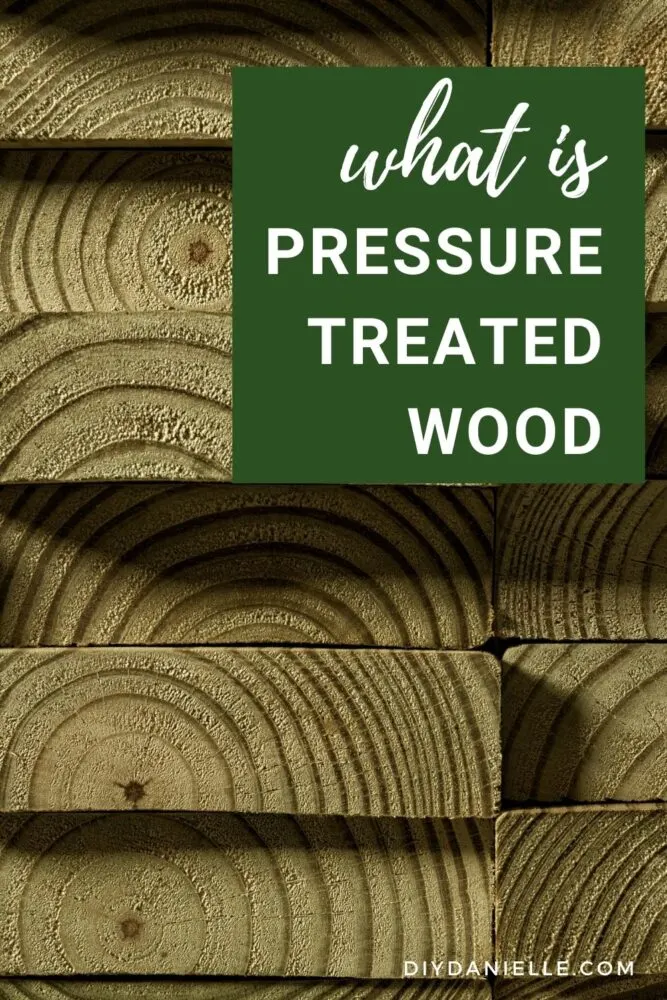Learn the difference between pressured treated wood and regular wood, how to know which to use, and safety considerations for both.
What is pressure treated wood and how does it work?
Pressure treated wood is a type of wood that is placed in a pressure tank and filled with chemical preservative liquid. The pressure causes the chemicals to replace the air in the wood. This process allows the chemical preservative to go deep inside the wood and reach each of the fibers, making it more effective than just letting the wood soak in liquid preservative.
After the pressure treatment, the wood is placed on a drip pad and allowed to dry.
This post may contain affiliate links which may earn me commissions should you click through them and take certain actions. As an affiliate for Amazon, Cricut, xTool, Home Depot, and other sites, I earn from qualifying purchases. Please DIY carefully. View my full legal disclosures here.
Please read the whole post so you don’t miss any important information!
Differences between pressure treated wood and regular wood
Since pressure treated wood is treated with preservatives, it is more resistant to weather, insects, and pests, making it more durable. Regular wood on the other hand is very susceptible to insects, pests, and fungus, especially if it comes in contact with moisture (e.g. placed on soil). However, since the preservatives used for pressure treated wood are chemicals like arsenic or copper, which are not safe for humans to touch, they need to be handled with caution. This means using pressure treated wood near food, soil, children, or pets can be extremely harmful.
Advantages of pressure treated wood:
- Pest and insect repellent: Since the chemical used has preservative qualities, this type of wood fights against the insects and prevents rots caused by them.
- Durable: Repelling the pests and the harsh weather in turn makes this type of wood last longer.
- Affordable: Although pressure treated wood would be more expensive than regular wood of the same kind, it is actually pretty affordable if you compare it with regular wood that has similar durability to it, like cedar.
Advantages of regular wood:
- Chemical free: This is the biggest advantage of using regular wood. Since it is not treated, it can be used in any project without having to worry about any harmful effects it might have upon contact.
- Ease of use: When using regular wood, you won’t have to worry about accidentally touching your skin or food while working with it.
- Easy disposal: This again relates to the absence of chemicals in its preparation. So, you won’t have to take any special precautions while disposing scraps or recycling.
- Affordable: If durability is not considered, regular wood is generally more affordable than pressure treated wood of the same kind.
Important factors to consider when working with regular and pressure treated wood
Masks are recommended when working with any type of wood, whether regular or pressure treated. Additionally, always make sure to cover your skin and eyes while working with pressure treated wood. This means wearing gloves, eye goggles, and clothes that cover your hands and legs. Also, be sure to thoroughly clean the clothes and surfaces after the work is done.
Where to use regular wood vs pressure treated wood
- Structural support: Even though pressure treated wood is no stronger than regular wood, it is more resistant to rot. This durability makes pressure treated wood a better option for structural support as we want the structure to last as long as possible.
- Outdoor use that will come in contact with moisture: Moisture will damage regular wood over time. So, for anything that is outdoors or might come in contact with moisture regularly, pressure treated wood is definitely recommended. For example, fences and decks.
- Wood that is difficult to replace: If wood is needed for someplace where it will be hard to replace, durability is definitely a priority and pressure treated wood will be required.
- Objects that kids and pets will come in regular contact with: The chemicals in pressure treated wood are not safe for people to come in contact with. Therefore, for any projects that are made for children, regular wood is recommended.
- Anything that will come in contact with food or plants: There is a good chance for the chemicals from treated wood to seep into plants, soil, or food if it comes in contact with them. These foods will no longer be safe to consume and may cause harm if ingested. In this case as well, it is better to use regular wood. For wood that needs to be used near food but will also come in contact with soil (which contains moisture), a naturally durable wood like cedar is a better option.
- Indoor projects: If there is no need for resistance to harsh weather and moisture, typically the case for indoor projects, regular wood is the best choice.
- Covered surfaces or structures: One advantage of pressure treated wood is that despite being unsafe to touch directly, it does not release any fumes. What this means is, it can be safely used in any indoor project where it will be covered with something else (e.g. completely carpeted flooring).
- Projects requiring durability: If you need to use durable and rot resistant wood for a project but are concerned for your family’s safety, one option is to use pressure treated wood and then cover it with an oil-based sealant. This will reduce the amount of chemical that is at the exterior of the wood.
A general rule of thumb is not to use pressure treated wood unless necessary. If you’re still unsure whether your specific project might require pressure treated wood or not, be sure to consult your local wood supplier. It is however helpful to keep these factors in mind beforehand.
If you’re new to woodworking here are some other posts you might like:
- What is wood stabilizer?
- Homemade outdoor wood cleaner
- Safety concerns with using wood pallets for projects
Please share and pin this post! If you make this project, share it in our Stuff Mama Makes Facebook Group. We have regular giveaways for gift cards to craft stores. You can also tag me on Instagram @doityourselfdanielle; I love seeing everything you make!


